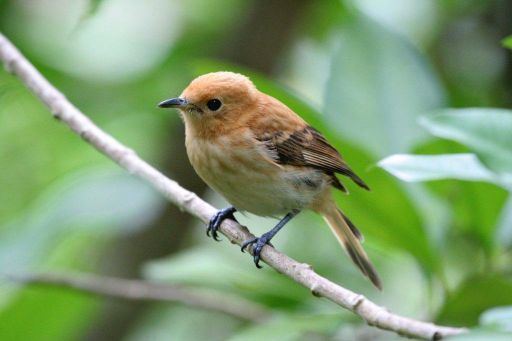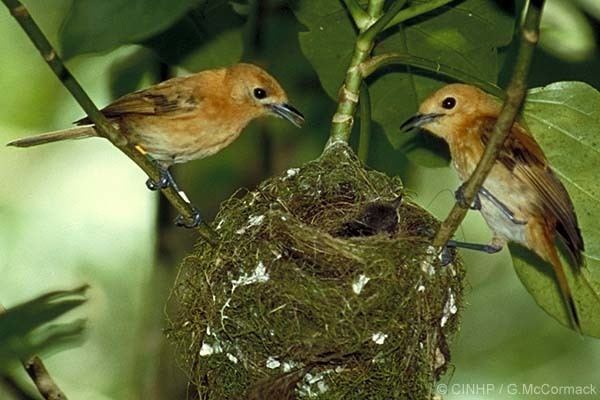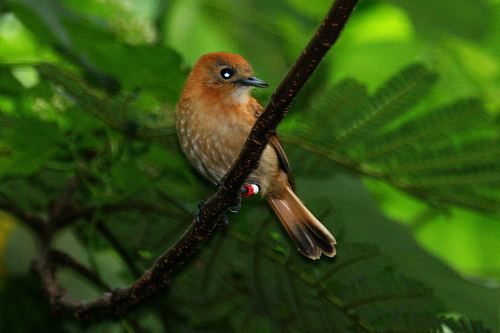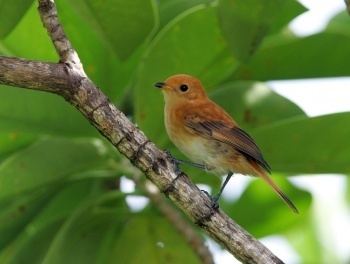Phylum Chordata Rank Species | Family Monarchidae Higher classification Pomarea Order Passerine | |
 | ||
Similar Pomarea, Bird, Mayrornis, Yap monarch, Vanikoro flycatcher | ||
The Rarotonga monarch (Pomarea dimidiata), also known as the Rarotonga flycatcher and kakerori, is a species of bird in the monarch flycatcher family Monarchidae. It is endemic to the Cook Islands.
Contents

Taxonomy and systematics

The Rarotonga monarch was originally described in the genus Monarcha. Alternate names include Cook Island flycatcher, Cook Islands monarch, and Rarotonga monarch-flycatcher.
Description

The Rarotonga monarch is a most unusual bird in a number of ways, including being the only bird known to undergo sequential changes in plumage as it grows. The initial plumage of orange to orange-grey changes to pure grey when maturity is reached after four years.
Behaviour and ecology

Owing to its tropical oceanic island location, the Rarotonga monarch is exceptionally long-lived for a bird with a mass of only 22 grams (0.8 oz), having an adult survival of between 85 and 89 percent, a life expectancy of seven to nine years, and a maximum lifespan of around 24 years. These figures are comparable to large Australian passerines like the superb lyrebird or satin bowerbird and more than ten times the life expectancies of similar sized Holarctic songbirds.
Breeding

The extraordinary longevity of these birds may explain the evolution of helpers at the nest in a family where this feature is otherwise completely absent. Males can breed at one year, but do not do so in practice until they are four years old.
Threats

Since the introduction of the black rat and feral cat, adult mortality has more than doubled; a change sufficient to reduce what was previously a highly numerous bird to one of the most endangered birds in the world by the middle 1980s, when the Rarotonga monarch was listed as one of the highest conservation priorities among all Pacific Island birds. The removal of rats has made breeding more successful: around two thirds of pairs assisted by a few helpers can now rear both of the normal clutch of two eggs, whereas in the 1980s breeding attempts had a success rate as low as eleven percent. Despite the growth in population, it is still known that a major tropical cyclone could destroy this growth with extreme swiftness, so that conservation work is still very important.
